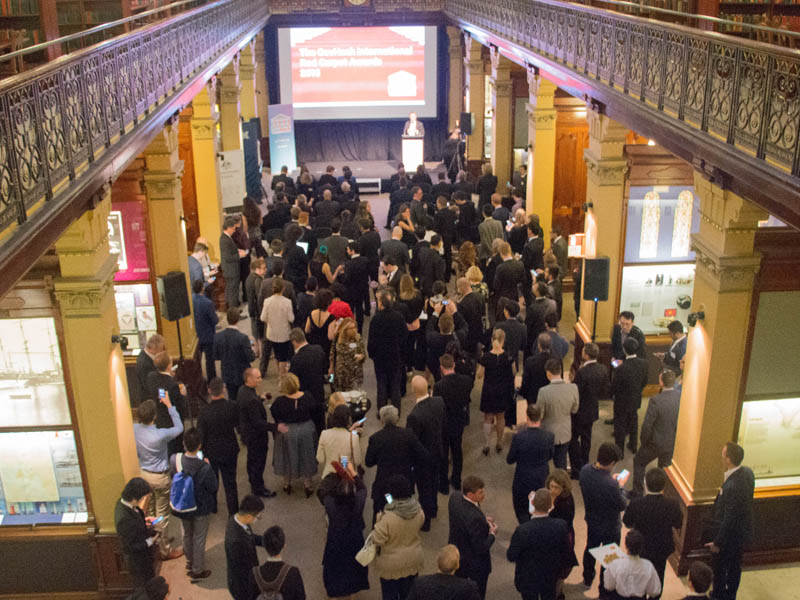GovHack 2016 ended on a high note last weekend as the winning project teams from across Australia and New Zealand soaked up all the glory and fame at GovHack 2016 Red Carpet Awards in Adelaide.
The winning teams were also rewarded with prize money and exclusive opportunities for their innovative ways of using open data to solve social and economic challenges facing the government and community.
More than 200 representatives from government, industry and community watched as 72 prizes across 28 Australian categories – and 11 prizes in three international categories – were awarded at the prestigious finale event.

Australian projects won nine of the prizes in the international categories, and New Zealand won two. The judges comprise of GovHack organisers, government agency representatives and industry sponsors.
“Creative people from across the nation greatly impressed the judges with their outstanding ideas for projects that helped unlock the value of open data for everyone in the community,” said GovHack National Director, Mr Richard Tubb.
GovHack 2016 was a 46-hour hackathon in July across 40 locations in Australia and New Zealand. Open data enthusiasts – from digital entrepreneurs, data analysts, game and app developers, to digital media creators, filmmakers, academics and researchers – gathered at various locations to innovate, collaborate and apply their creative skills to open government data.
This year’s event attracted 3,000 participants and 480 project submissions to compete for the prestigious Red Carpet Awards. A record number of data sets (over 170) and data portals (over 40) were made available for the event by a wide range of government agencies.
Projects submissions included community apps and prototype electronic gadgets, games, stories to informative visualisations and artistic displays. Among the hundreds of submissions, Mr Tubb singled out a couple of projects that caught his attention this year.
Search Party, which took the top spot in the National award category, is a mobile application that coordinates the public efforts in searching for missing persons by using a GPS ‘heat map’ to identify areas that have not been searched.
The creators of the app have had experience with someone who had gone missing, which gave them the idea for the app.
Users join a search party looking for an individual reported missing in their immediate area.
They then consult the heat map to view recent search attempts for that person in the area, and use this information to better coordinate their search effort, that is, focus on areas that haven’t been searched recently. If the missing person is found, a user is prompted to call crime stoppers.
The app combines missing person data from the ABC and the Australian Government with data from the Gold Coast City Council and the Queensland Government.
Mr Tubb also had good words for Greenu, an interactive poster series that enables people of all ages to learn about public gardens in a fun and active way.
The graphic series works like a scavenger hunt (think Pokemon Go) encouraging people to travel to the posters location in order to scan a QR code that will tell them about a vegetable they can pick in that garden.
The idea was brought together using data from Adelaide and Brisbane City Councils, the Bureau of Meteorology, the Metropolitan Open Space System, and the ABC.
Besides physical activity, the hunt also encourages a healthy lifestyle by leading the participant to a corresponding public garden in order to collect the next vegetable in a featured recipe.
By the end of the hunt, the participant will either have all the ingredients to prepare a healthy snack/meal, or will have understood the importance and need for more public gardens. The fun, educational and rewarding project walked away with first prize in the International award category.
Other award-winning projects include:
- Weather Ball: The Weather Ball is an Internet connected desk light that lets you know when the weather is taking a turn for the worse by changing colour and flashing.
- Walks of Life: An app that raises awareness of the health risks people face at different stages of their lives by taking a walk through the life of a virtual character named Sam.
- Staying the Course: Why do students drop out of tertiary education? This visualisation uses open data from the Department of Education and Training to pinpoint the risk factors and the actions needed to help students stay the course.
- Proximity: This smartphone app alerts drivers when they enter high risk areas for accidents using traffic accident data from the Victorian Government. It also warns truck drivers when they are approaching low bridges.
- SweetSpot: What’s the best location for a new business? This visualisation can pick the best spot by combining employment, building, residential and traffic data.
From a tiny single-location event in 2009 to a volunteer-run and community-driven annual event that it is today, we can probably say that GovHack has come of age and has solidified its position as the world’s biggest annual open data hackathon.
Mr Tubb however is not ready to rest on his laurels—he still has a few more things on his wish list for GovHack 2017.
“We would like to see more women, especially young women in STEM, involved in the event next year,” he said. “It would also be great to explore challenges that are affecting society, perhaps more community-focused and health-based issues.”
The response to this year’s event goes to show that the civic hacker community is vibrant and fast-growing. With the massive interest from the community to explore creative ways to make data work harder and smarter for all of us, he might just have his way.
Do you know more? Contact James Riley via Email.
